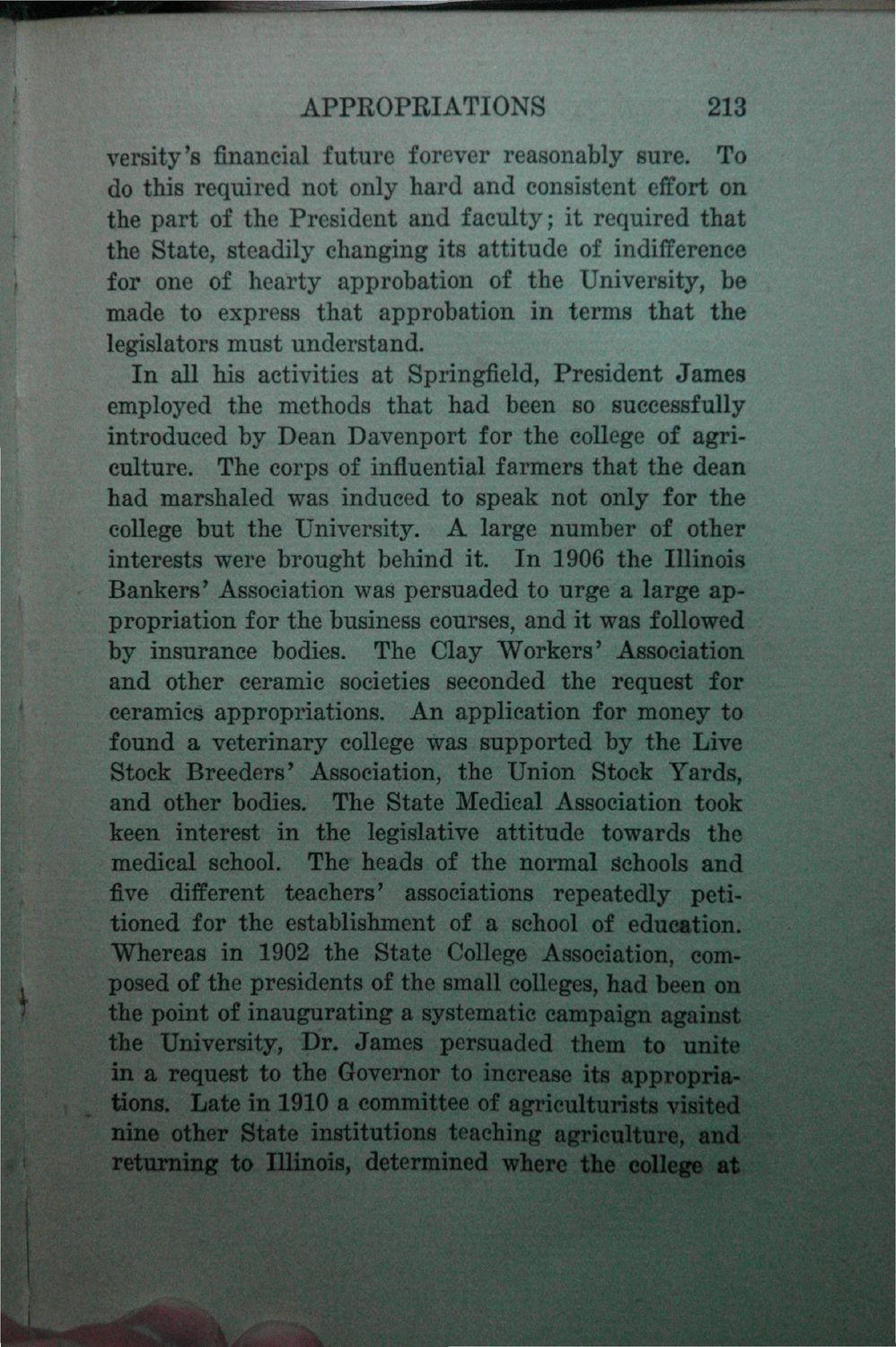| |
| |
Caption: Book - History of the University (Nevins)
This is a reduced-resolution page image for fast online browsing.

EXTRACTED TEXT FROM PAGE:
APPROPBIATIONS 213 versity's financial future forever reasonably sure. To do this required not only hard and consistent effort on the part of the President and faculty; it required that the State, steadily changing its attitude of indifference for one of hearty approbation of the University, be made to express that approbation in terms that the legislators must understand. In all his activities at Springfield, President James employed the methods that had been so successfully introduced by Dean Davenport for the college of agriculture. The corps of influential farmers that the dean had marshaled was induced to speak not only for the college but the University. A large number of other interests were brought behind it. In 1906 the Illinois Bankers' Association was persuaded to urge a large appropriation for the business courses, and it was followed by insurance bodies. The Clay Workers' Association and other ceramic societies seconded the request for ceramics appropriations^An application for money to found a veterinary college was supported by the Live Stock Breeders' Association, the Union Stock Yards, and other bodies. The State Medical Association took keen interest in the legislative attitude towards the medical school. The heads of the normal Schools and five different teachers' associations repeatedly petitioned for the establishment of a school of education. Whereas in 1902 the State College Association, composed of the presidents of the small colleges, had been on the point of inaugurating a systematic campaign against the University, £)r. James persuaded them to unite in a request to the Governor to increase its appropriations. Late in 1910 a committee of agriculturists visited nine other State institutions teaching agriculture, and returning to Illinois, determined where the college at
| |